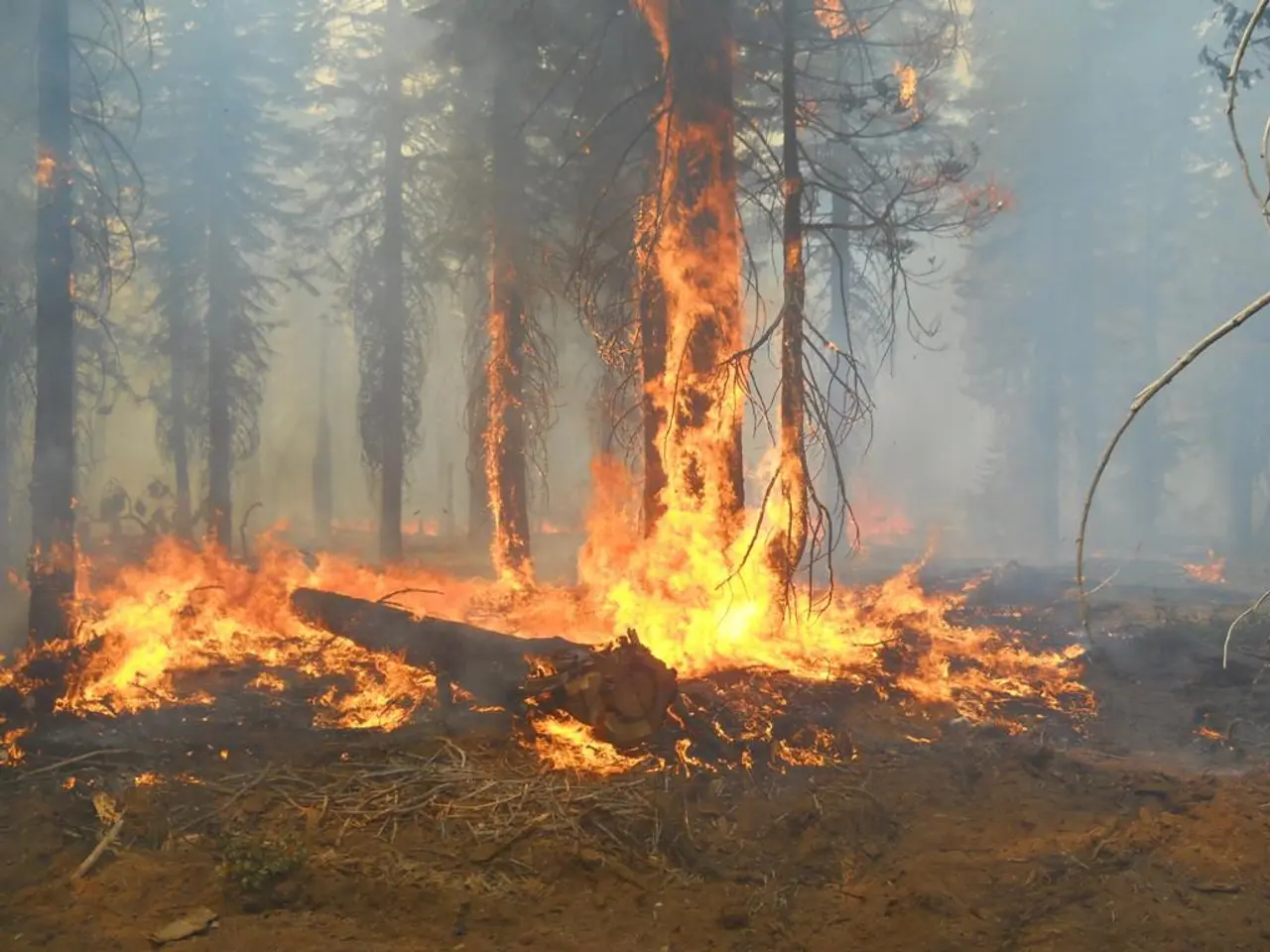fortifyingwoodlands for climate heat endurance
The battle against wildfires is being transformed by the integration of artificial intelligence (AI) and autonomous drones. These high-tech devices are being used to quickly detect, monitor, and suppress fires with minimal human intervention, offering significant benefits in terms of speed, safety, and precision.
In 2026, the "Silvaguard" drone, developed by Dryad Networks, is expected to be launched on the market. Initially, it will be deployed outside Europe, but plans for a European deployment are in the works for the next few years, subject to the development of a regulatory framework for commercial operation. The "Silvaguard" drone is designed to analyze wildfire situations, determine their size and location, and transmit this information to fire departments for faster response.
Wildfires are currently ravaging southern France, Spain, and Portugal, and the Mediterranean region is particularly vulnerable due to the proliferation of non-native eucalyptus trees, which are highly flammable due to their high water extraction and oil content. In many parts of the world, fires are breaking out in places once considered too humid to support wildfires, such as rainforests in the Amazon and Indonesia.
The frequency and intensity of wildfires are increasing due to rising global temperatures and climate change, making faster response times crucial in combating them. Good preparation, better forest management, and protective measures can help prevent the worst outcomes of wildfires. Failure to clear non-native grass species, such as cheatgrass, from towns and villages can contribute to the spreading of wildfires, as observed in Los Angeles in late 2024 and early 2025.
Firebreaks, areas kept free of vegetation, can be used as a strategy to combat wildfires by slowing or stopping the fire's spread. Green firebreaks, planted around population centers and civil infrastructure, can also help prevent wildfires. In some parts of Germany, fire surveillance cameras have been installed on cellphone towers, water towers, or old fire watchtowers to aid in early wildfire detection.
The FLARE-X team, led by the University of Texas, is developing a fleet of low-cost, high-performance autonomous drones powered by AI. Their system dynamically maps pre-fire risk, detects and verifies active fires, and executes fire suppression via precision-guided payload drops—all fully autonomously within a 1,000 km² area and under 10 minutes from detection. This approach delivers real-time situational awareness and rapid, targeted response, preventing fires from escalating into destructive events.
In California, drones have become integral to wildfire response. CAL FIRE doubled its use of drones in 2025 for various tasks including aerial ignition for controlled burns using incendiary spheres, real-time fire perimeter mapping, and damage assessment. Large military-grade drones also provide extended surveillance capabilities, offering commanders timely intelligence on fire behavior even at night or through smoke using infrared and radar sensors.
The benefits of using autonomous AI-driven drones for wildfire management include faster detection and response, increased safety, precision targeting, expanded coverage, and enhanced real-time situational awareness. These advancements promise to contain 95% of wildfires to minimal sizes and reduce losses in increasingly fire-prone areas.
According to the United Nations Environment Program (UNEP), extreme wildfires will increase by about 14% by 2030 and 30% by 2050. The integration of AI with autonomous drones—ranging from small agile aircraft to large surveillance UAVs—is revolutionizing wildfire detection, monitoring, controlled burning, and direct suppression efforts, offering a promising solution to the growing wildfire crisis.
References:
- Dryad Networks
- CAL FIRE
- FLARE-X
- University of Texas at Austin
- United Nations Environment Program
- The integration of artificial intelligence (AI) and autonomous drones is being employed in America to combat wildfires, offering speed, safety, and precision.
- In the world, the frequency and intensity of wildfires are increasing due to climate change, necessitating faster response times.
- The United Nations Environment Program (UNEP) predicts that extreme wildfires will rise by 14% by 2030 and 30% by 2050.
- The "Silvaguard" drone, developed by Dryad Networks, is poised to hit the market in 2026 and will initially operate outside Europe, with plans for European deployment in the following years.
- The Florida-based FLARE-X team, led by the University of Texas, is developing a fleet of autonomous drones powered by AI to provide real-time situational awareness and rapid, targeted response to wildfires.
- Fire surveillance cameras in some parts of Europe and Germany are helping with early wildfire detection.
- California has integrated drones, such as those used by CAL FIRE, into its wildfire response strategy, using these devices for tasks like aerial ignition, real-time fire perimeter mapping, and damage assessment.




